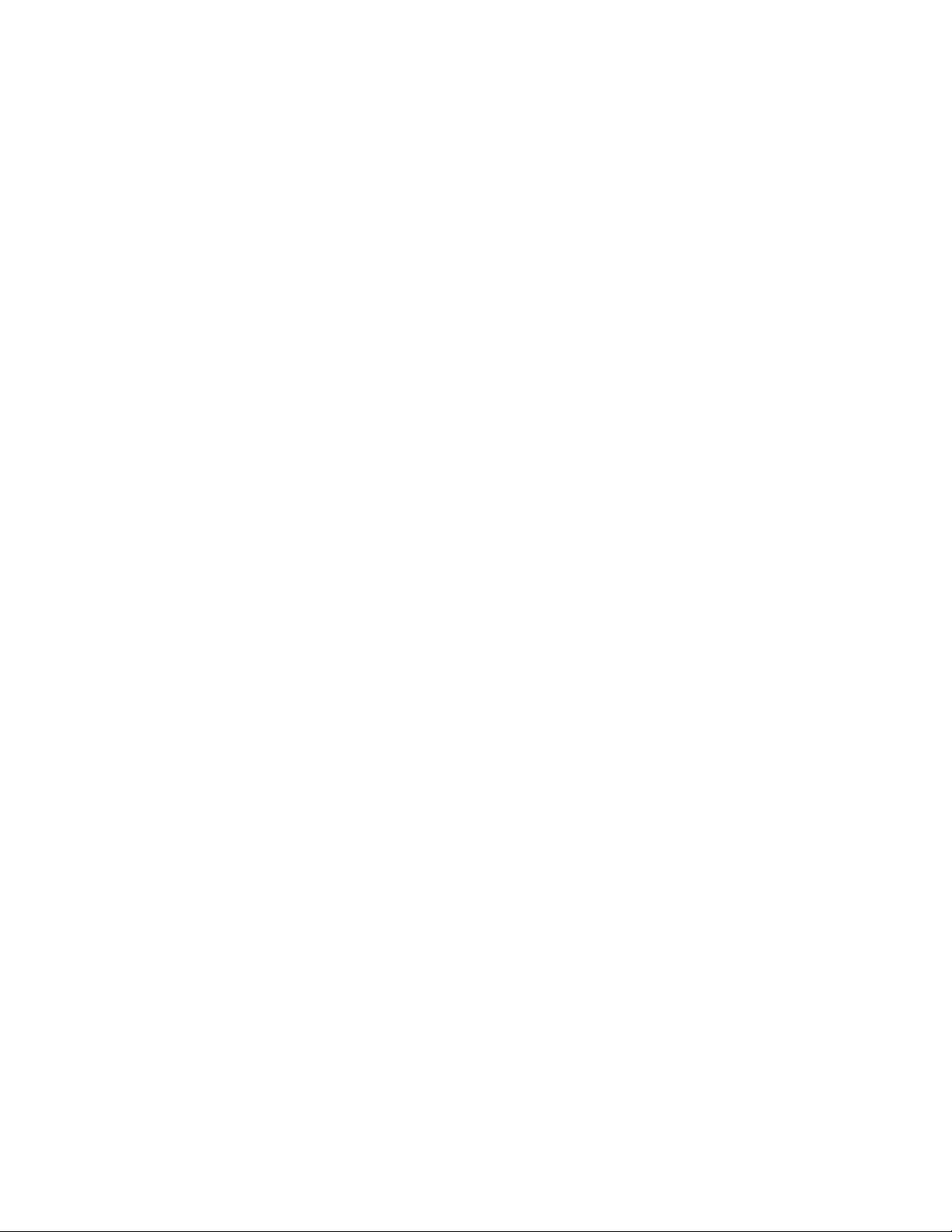
(It cannot be the case that the angle between sides a
and bis acute, for then a2+ b2> c2, which is not true.
Nor can the angle between these two sides be obtuse.
The only possibility that remains is that these two sides
surround a right angle.)
For a right triangle or an obtuse triangle, these
observations show that the longest side of such a trian-
gle lies opposite the largest angle of the triangle. The
LAW OF SINES
can be used to prove that this is true even
for acute triangles:
In any triangle the longest side of the triangle
lies opposite the largest angle in the triangle.
Special Properties of Triangles
There are a number of surprising properties of triangles
worthy of note.
1. Lines and Concurrency
A
PERPENDICULAR
line that passes through the
MID
-
POINT
of a given side of a triangle is called a perpendic-
ular bisector of the triangle, and a perpendicular line
that passes through the vertex opposite the given side is
called an altitude of the triangle. A study of equidis-
tance (See
EQUIDISTANT
) shows that the three perpen-
dicular bisectors of any triangle pass through a
common point (called the circumcenter of the triangle),
as do the three altitudes of any triangle (through a
point called the orthocenter of the triangle). That is,
each set of three lines is
CONCURRENT
.
A
MEDIAN OF A TRIANGLE
is a line connecting one
vertex of a triangle to the midpoint of the side opposite
that triangle. It is possible to prove that the three medi-
ans of any triangle are also concurrent. (The common
point of intersection is called the centroid of the trian-
gle.) The Swiss mathematician L
EONHARD
E
ULER
(1707–83) showed that the centroid, orthocenter, and
circumcenter of any triangle lie in a straight line, today
called the E
ULER LINE
.
A study of equidistance also shows that the three
lines bisecting the angles of a triangle are concurrent.
2. Equilateral Triangles
Choose any point Pinside an equilateral triangle and
compute the sum of the distances of this point from
each of the three sides of the triangle. Then this sum
equals the value of the height of the triangle, no matter
where the point Pis placed. (To see this, suppose the
equilateral triangle has side-length b. Label the vertices
of the triangle A, B, and C. Draw line segments con-
necting Pto each vertex of the triangle. Then the area
Aof the triangle, A= bh where his the height of the
equilateral triangle, is the sum of the areas of the
three triangles ABP, ACP, and BCP. Let h1, h2, and h3
be the heights of these three triangles, respectively. We
have bh = bh1+ bh2+ bh3yielding h1+ h2
+ h3= h.)
3. Tilings
Any triangle can be used for a
TESSELLATION
of the plane.
4. Napoléon’s Theorem
French emperor Napoléon Bonaparte (1769–1821)
is alleged to have discovered the following surpris-
ing result:
Given an arbitrary triangle, draw an equilat-
eral triangle on the outside of each side of the
triangle. Then the centers of these three equi-
lateral triangles form another equilateral trian-
gle, called the external Napoléon triangle of
the original triangle. Moreover, if we flip each
equilateral triangle so that it now lies inside the
original triangle, then the centers of those tri-
angles again form an equilateral triangle, called
the internal Napoléon triangle. The difference
of the areas of the external and internal
Napoléon triangles equals the area of the origi-
nal triangle.
5. Integer Triangles
A triangle is called an integer triangle if each side-length
of the triangle is a whole number. Thus any triangle that
is formed by laying out matchsticks, say, without break-
ing the matchsticks, is an integer triangle. It is interest-
ing to count the number of integer triangles one can
create with a fixed number of matchsticks. For exam-
ple, there are four different integer triangles with
perimeter 11: a 5-5-1 triangle, a 5-4-2 triangle, a 5-3-3
triangle, and a 4-4-3 triangle. Surprisingly, the count
decreases if you add an extra matchstick to the collec-
tion: one can only make three different triangles with
perimeter 12 (namely, 5-5-2, 5-4-3, and 4-4-4 triangles).
1
–
2
1
–
2
1
–
2
1
–
2
1
–
2
triangle 507